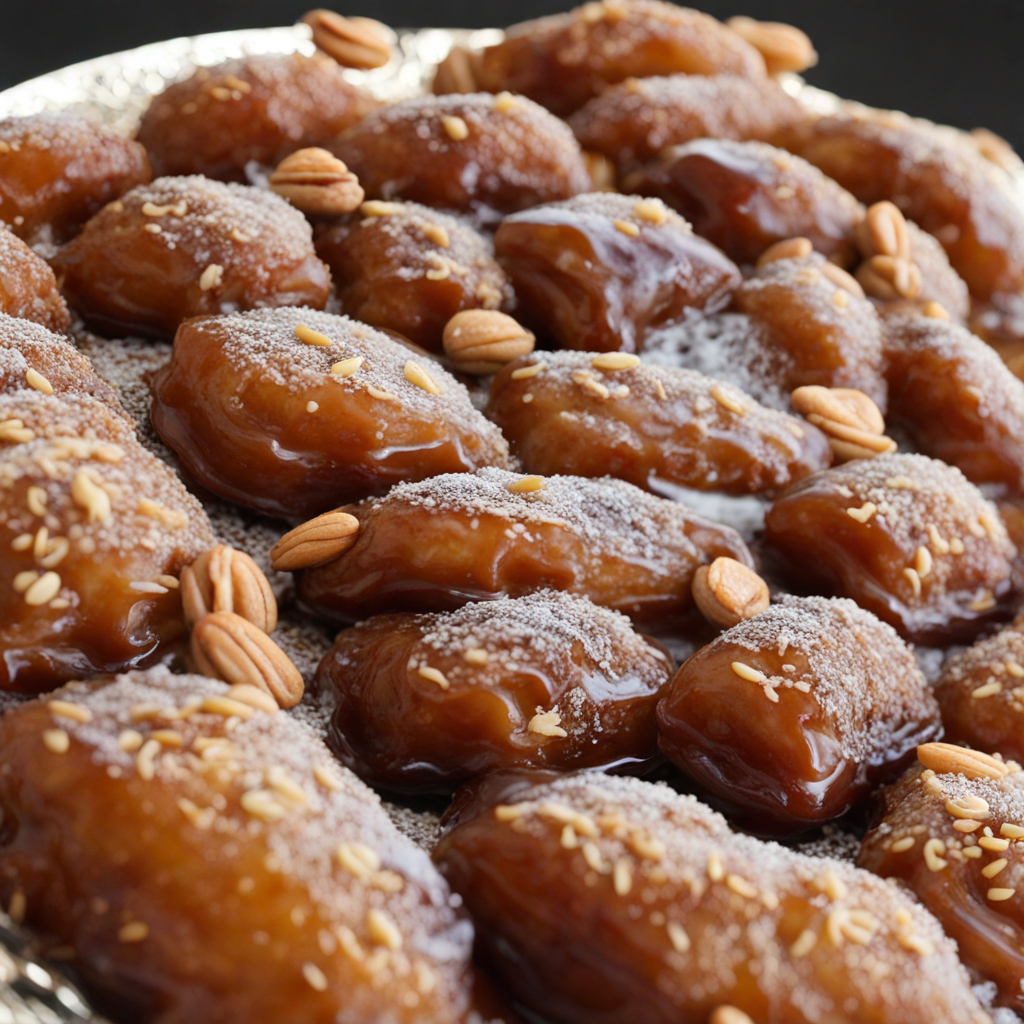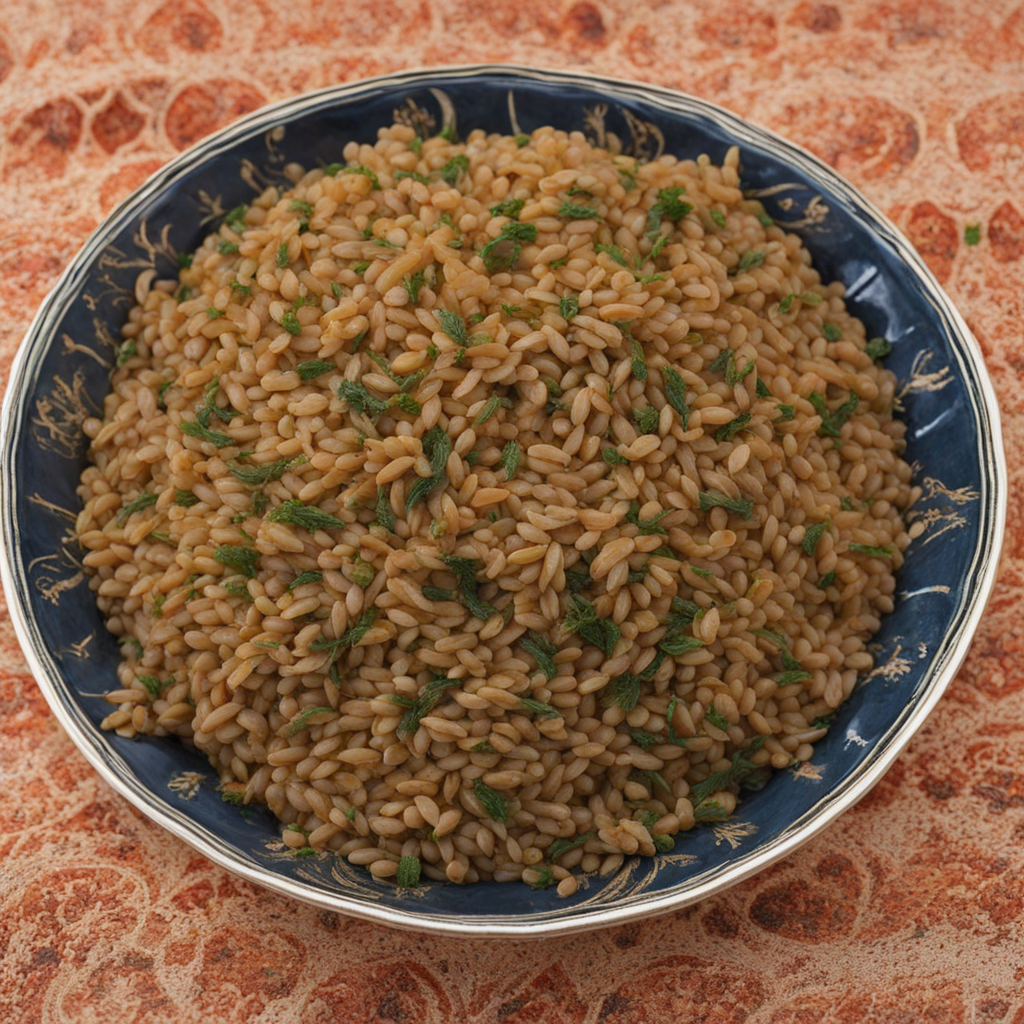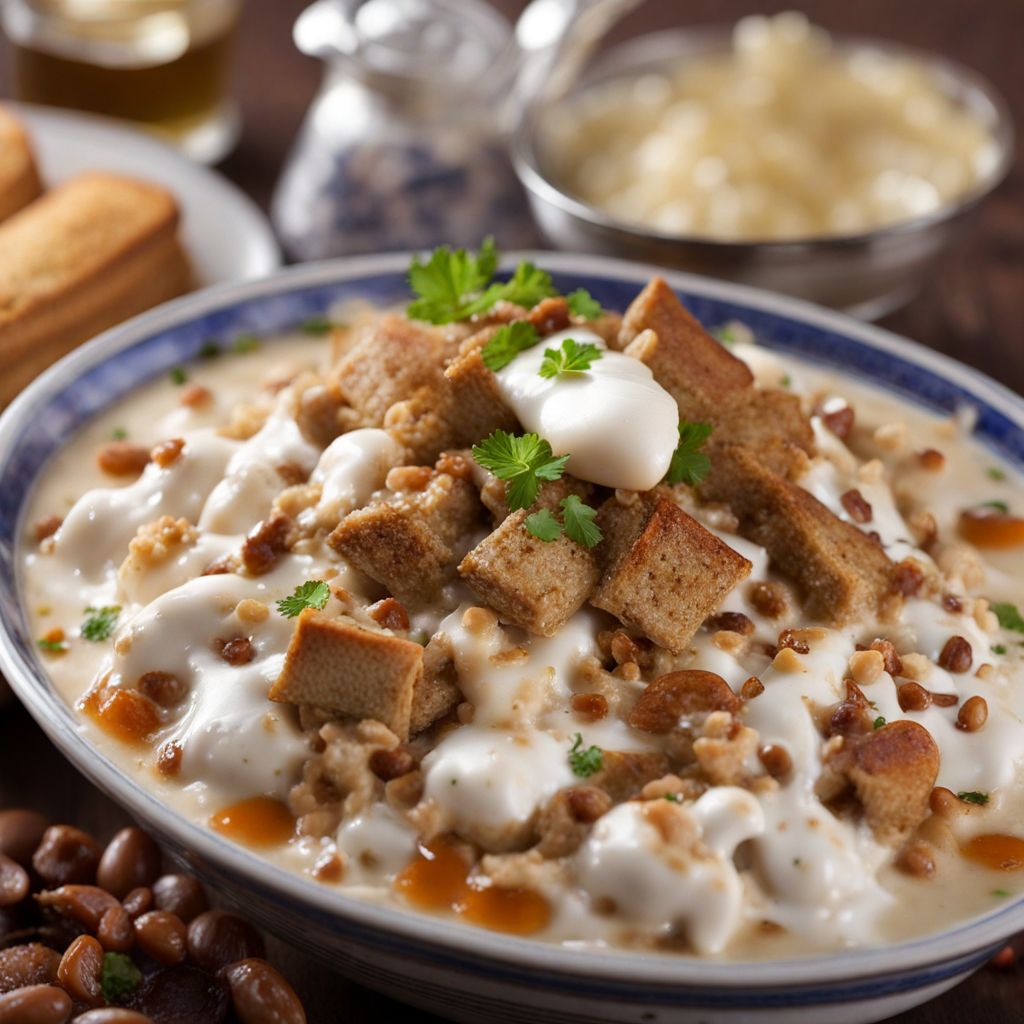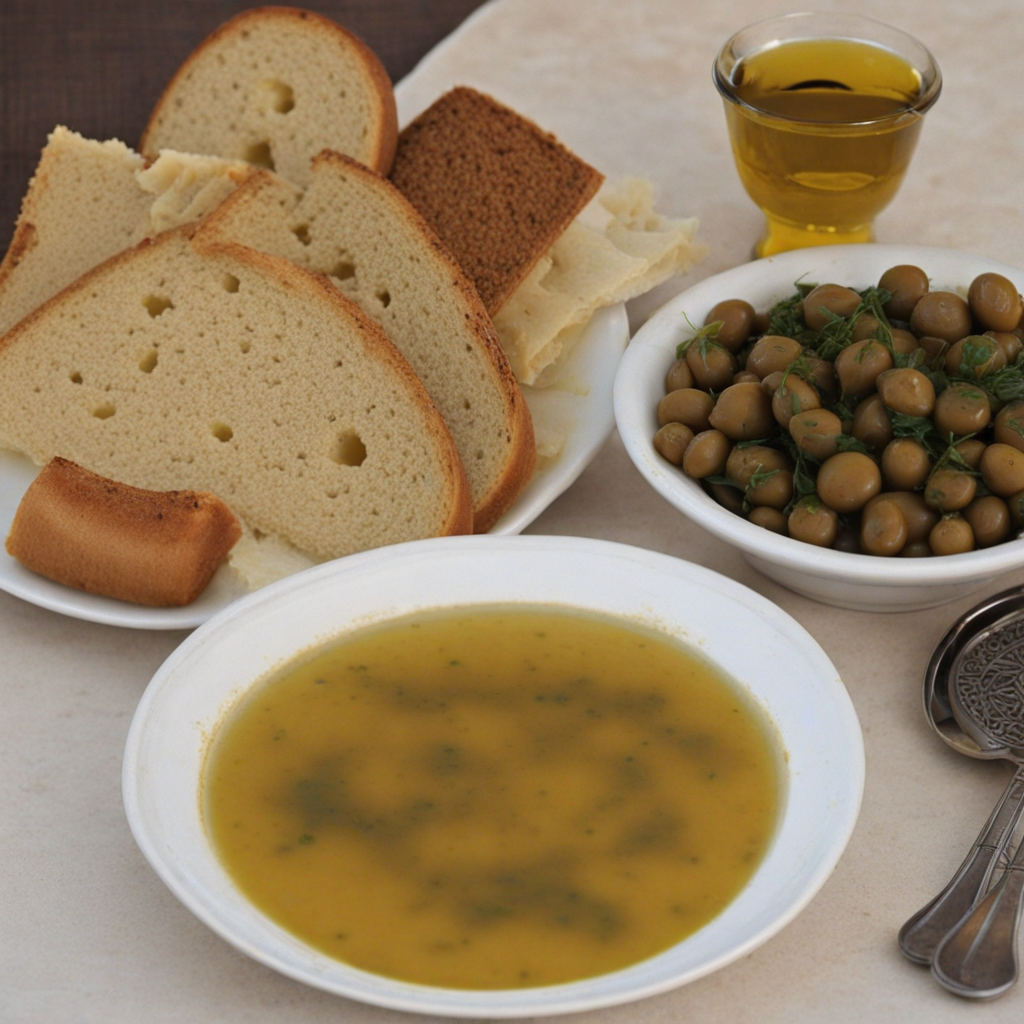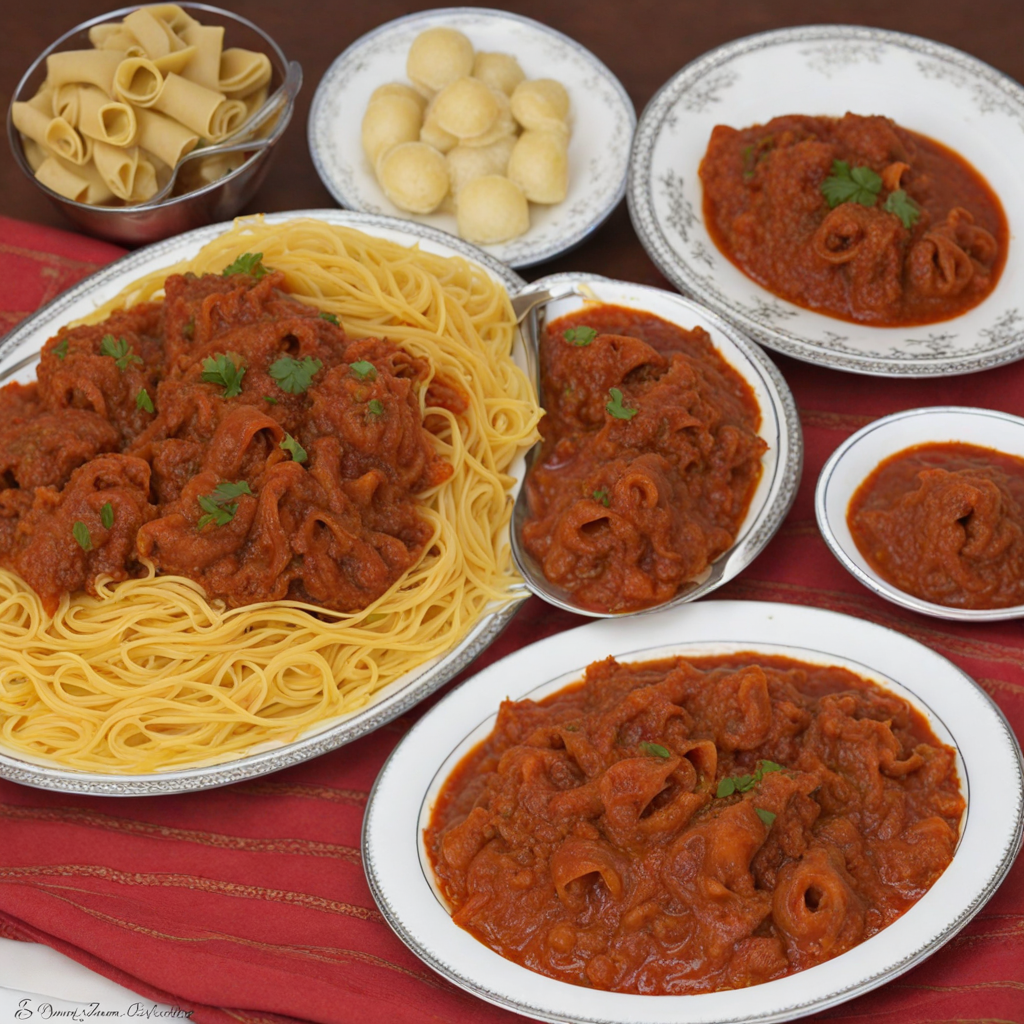Makroudh
Makroudh is a traditional Libyan pastry that delights the senses with its rich flavors and textures. This iconic treat is a deep-fried dessert that features a golden, crispy exterior which perfectly encases a sweet filling. The most common filling is made from a blend of finely ground dates or almonds, sweetened with a hint of cinnamon and sometimes a touch of orange blossom water. The combination of the nutty, sweet filling and the crunchy shell creates a delightful contrast that is sure to entice anyone looking for a unique culinary experience. One of the standout features of Makroudh is its versatility; while the classic date filling reigns supreme, variations exist that incorporate other ingredients such as walnuts or figs, allowing for a personalized touch to this beloved dish. After frying, the pastries are often drizzled with a syrup made from honey or sugar, which adds a luscious sweetness that permeates the crispy outer layer. This syrup not only enhances the flavor but also gives the Makroudh a beautiful, glossy finish that is visually appealing. Enjoying Makroudh is not just about the taste—it's also a cultural experience. Often served during special occasions or gatherings, these pastries are a symbol of hospitality in Libyan culture. Pairing them with a cup of mint tea or coffee elevates the experience, making it a perfect treat for sharing with friends and family. Whether you're indulging in a homemade version or purchasing them from a local bakery, Makroudh promises a delightful adventure for your palate, inviting you to savor the rich culinary heritage of Libya.
How It Became This Dish
Origin of مقروض مقروض, a traditional Libyan sweet treat, has its roots deeply embedded in the culinary traditions of North Africa. Its origins can be traced back to the Berber and Arab influences that have shaped Libya's rich history. The name "مقروض" translates to "the pressed one," which refers to its distinctive shape and preparation method. This delightful dessert is primarily made from semolina flour and is often filled with a sweet date paste or almond mixture, showcasing the region's abundant natural ingredients. The use of semolina flour in مقروض reflects the agricultural practices of the Libyan people, who have cultivated grains for centuries. Dates, a staple in Libyan cuisine, add both sweetness and nutritional value, making the dessert a favored choice for celebrations and communal gatherings. The combination of these ingredients is not only a testament to the local availability of resources but also illustrates the ingenuity of Libyan culinary practices. \n\n Cultural Significance مقروض holds a significant place in Libyan culture, often prepared for special occasions such as weddings, religious celebrations, and family gatherings. The preparation of this sweet is typically a communal activity, bringing families and friends together to share in the labor and joy of creating something special. This aspect of communal cooking fosters a sense of unity and reinforces cultural bonds, making مقروض more than just a dessert—it's a symbol of togetherness. In Libyan homes, مقروض is often served alongside tea or coffee, making it a popular choice for hospitality. Offering مقروض to guests is a way to express generosity and warmth, embodying the traditional Libyan value of welcoming visitors with open arms. The sweet treat is also associated with the holy month of Ramadan, where it is enjoyed as part of the iftar meal, breaking the fast after sunset. Its rich flavor and energy-boosting properties make it an ideal choice during this sacred time. \n\n Preparation and Variations Traditionally, the preparation of مقروض involves a meticulous process that begins with the making of the semolina dough, which is often flavored with orange blossom water or rose water to enhance its aroma. The dough is then rolled out and filled with a mixture of dates, nuts, and spices, such as cinnamon and anise, which add depth to the flavor profile. Once filled, the dough is shaped into rectangular or diamond forms and deep-fried until golden brown. The final touch often involves soaking the fried مقروض in a sugar syrup or honey, which adds a sticky sweetness that complements the nutty, rich filling. The result is a decadent treat that is crispy on the outside and soft on the inside, embodying the perfect balance of textures. Over time, variations of مقروض have emerged, influenced by regional tastes and available ingredients. Some modern adaptations include fillings made from figs, walnuts, or even chocolate, reflecting the evolving nature of Libyan cuisine. Additionally, the method of cooking has diversified, with some opting to bake the مقروض instead of frying, making it a slightly healthier option while still retaining its delicious flavors. \n\n Historical Influences The history of مقروض is intertwined with the broader historical context of Libya, including the influences of various conquerors and traders who passed through the region. The introduction of new spices and sweeteners from trade routes has enriched the flavorings used in مقروض over the centuries. For example, the arrival of sugar cane production in North Africa during the medieval period likely influenced the use of sugar syrup in the dessert. The Ottoman Empire, which ruled over Libya for several centuries, also played a role in shaping the culinary landscape of the region. The exchange of culinary practices between the Ottomans and the local population resulted in a fusion of flavors and techniques, contributing to the development of مقروض as we know it today. This historical interplay underscores the significance of food as a reflection of cultural identity and adaptability. \n\n Modern Day مقروض In contemporary Libya, مقروض remains a beloved treat, cherished by both the younger and older generations. Its presence in local markets and bakeries signifies its enduring popularity, while home cooks continue to pass down traditional recipes from one generation to the next. The dessert is not only enjoyed within Libya but has also gained recognition in neighboring countries, where it is often featured in North African cuisine. The revival of interest in traditional foods has led to a renewed appreciation for مقروض, with many people seeking to reconnect with their heritage through cooking. Food festivals and cultural events often showcase مقروض, allowing both locals and tourists to experience the flavors of Libya. This renewed interest has also spurred innovation, with chefs experimenting with new ingredients and presentation styles, all while honoring the traditional roots of this cherished dessert. \n\n Conclusion مقروض is more than just a sweet treat; it is a symbol of Libyan culture and history. Its origins, cultural significance, and development over time reflect the diverse influences that have shaped Libya's culinary landscape. As it continues to evolve, مقروض serves as a delicious reminder of the importance of food in connecting people to their heritage, celebrating community, and preserving traditions for future generations. It stands as a testament to the rich tapestry of flavors and stories that define Libyan cuisine, inviting all to indulge in its sweetness and share in its history.
You may like
Discover local flavors from Libya


